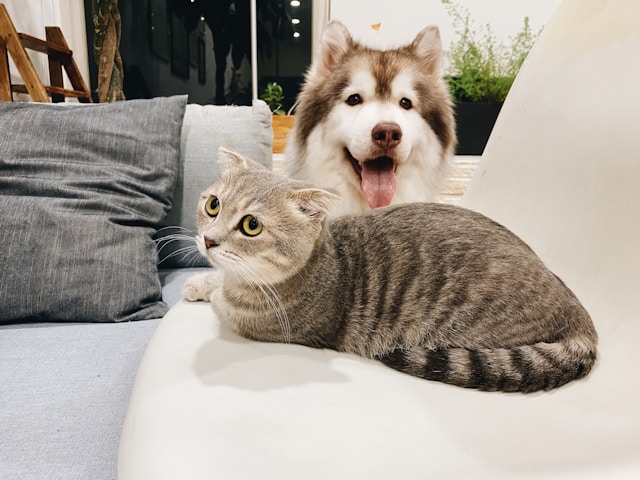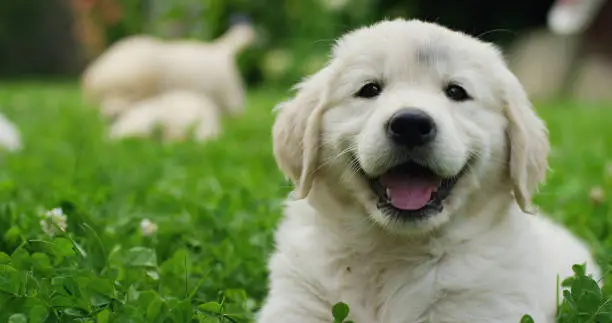The Ultimate Guide to Puppy-Proofing Your Home

Introduction
Bringing a new puppy into your home is an exciting and joyful experience, but it also comes with significant responsibilities. One of the first tasks you’ll need to tackle is ensuring your home is safe and secure for your curious and energetic new family member. Puppies are naturally inquisitive, and their desire to explore can sometimes lead them into dangerous situations. That’s why puppy-proofing your home is essential to keeping your new furry friend safe and happy.
This comprehensive guide will walk you through everything you need to know about puppy-proofing your home, from the living room to the backyard. We’ll cover common hazards, practical tips, and essential items you’ll need to create a puppy-friendly environment.
Why Puppy-Proofing is Important
Puppies are like toddlers—they’re curious, playful, and have a knack for getting into trouble. While their playful nature is part of their charm, it also means they can inadvertently harm themselves or damage your belongings if your home isn’t properly prepared. Puppy-proofing helps to:
- Prevent Injuries: Sharp objects, electrical cords, and toxic substances can all pose serious risks to an unsuspecting puppy.
- Protect Your Belongings: Puppies love to chew, scratch, and dig, which can lead to damaged furniture, shoes, and other household items.
- Ensure Peace of Mind: Knowing your home is safe for your puppy allows you to relax and enjoy the experience of raising your new pet.
Room-by-Room Puppy-Proofing Guide
1. Living Room
The living room is a central gathering space, and it’s likely where your puppy will spend a lot of time. To make it safe:
- Secure Electrical Cords: Puppies love to chew on cords, which can lead to electric shocks. Use cord covers or hide them behind furniture. Consider unplugging devices when not in use.
- Remove Small Objects: Anything small enough to be swallowed, such as coins, batteries, or small toys, should be kept out of reach.
- Protect Furniture: Use slipcovers or washable throws to protect your furniture from scratches and stains. Consider investing in a pet-friendly fabric that is resistant to wear and tear.
- Block Off Hazardous Areas: If you have a fireplace, use a sturdy screen to keep your puppy away from the flames and ashes. Baby gates can be helpful to block access to stairs or certain rooms.
2. Kitchen
The kitchen is full of tempting smells and potential dangers. Keep your puppy safe by:
- Securing Trash Bins: Puppies are notorious for digging through the trash. Use a trash can with a secure lid or keep it in a cabinet.
- Store Food Safely: Keep all food, especially chocolate, grapes, and other toxic items, out of your puppy’s reach. Store food in high cabinets or containers with secure lids.
- Lock Cabinets: Use childproof latches on lower cabinets to keep your puppy from accessing cleaning supplies, sharp objects, or food.
- Avoid Table Scraps: While it’s tempting to share your meals, many human foods are dangerous for dogs. Stick to dog-safe treats.
3. Bedroom
Your bedroom should be a safe and comforting space for your puppy:
- Remove Hazardous Items: Keep personal items like shoes, clothing, and jewelry off the floor to prevent chewing and choking hazards.
- Create a Safe Sleeping Area: Set up a comfortable bed or crate for your puppy, away from direct sunlight or drafts. Make sure the space is cozy and secure.
- Hide Cords: Just like in the living room, ensure that electrical cords, especially those connected to lamps and chargers, are out of reach.
4. Bathroom
Bathrooms are filled with potential dangers, from cleaning products to slippery surfaces:
- Keep the Toilet Lid Down: Puppies may try to drink from the toilet, which can expose them to harmful chemicals. Keep the lid closed.
- Store Medications Safely: Medications should be kept in a secure cabinet, as even over-the-counter drugs can be toxic to dogs.
- Use Non-Slip Mats: Place non-slip mats in the bathtub or shower to prevent your puppy from slipping if they accidentally get inside.
5. Laundry Room
The laundry room can be particularly hazardous due to the presence of detergents and small items like dryer sheets:
- Secure Laundry Detergent: Detergents and fabric softeners can be harmful if ingested. Keep them stored in a high, locked cabinet.
- Keep Laundry Off the Floor: Socks, underwear, and other small clothing items can be tempting chew toys for puppies but can cause choking or blockages.
- Close the Washer and Dryer: Always check inside your washer and dryer before use, and keep the doors closed to prevent your puppy from climbing inside.
6. Outdoor Spaces
Your backyard or garden should be a safe area for your puppy to explore:
- Secure Fencing: Make sure your yard is fully enclosed with no gaps or holes that your puppy could escape through. The fence should be high enough to prevent your puppy from jumping over.
- Remove Toxic Plants: Many common plants, such as lilies, azaleas, and daffodils, are toxic to dogs. Remove these from your garden or place them out of reach.
- Check for Hazards: Remove any sharp objects, tools, or chemicals that could harm your puppy. Be cautious with lawn care products and always store them securely.
- Provide Shade and Water: Ensure your puppy has access to a shaded area and fresh water at all times, especially during hot weather.
Essential Puppy-Proofing Items
To effectively puppy-proof your home, consider investing in the following items:
- Baby Gates: Useful for blocking off certain areas of the home, such as stairs or rooms where you don’t want your puppy to roam freely.
- Chew Toys: Provide plenty of chew toys to satisfy your puppy’s natural urge to chew, which can help protect your furniture and belongings.
- Cord Covers: These will help keep electrical cords safe from curious puppy teeth.
- Non-Toxic Cleaners: Switch to pet-safe cleaning products to reduce the risk of poisoning if your puppy comes into contact with cleaned surfaces.
- Pet-Safe Plants: If you enjoy having indoor plants, choose varieties that are safe for dogs, such as spider plants, Boston ferns, and African violets.
- Crate or Playpen: A crate or playpen provides a safe space for your puppy when you can’t supervise them directly.
Training and Supervision
Even the most thoroughly puppy-proofed home requires supervision. Here are some tips to keep in mind:
- Supervise Constantly: Always keep an eye on your puppy, especially during the first few weeks. Puppies can get into trouble quickly, and your supervision is crucial.
- Teach Boundaries: Start training your puppy from day one. Teach them basic commands like “sit,” “stay,” and “leave it” to help prevent them from getting into hazardous situations.
- Use Positive Reinforcement: Reward your puppy with treats and praise when they follow the rules. Positive reinforcement is key to successful training.
Common Puppy Hazards to Watch Out For
Even with careful preparation, there are a few common hazards that can still pose a risk to your puppy:
- Choking Hazards: Small objects like buttons, coins, and small toys can easily be swallowed by a puppy, leading to choking or blockages.
- Toxic Foods: Chocolate, onions, garlic, grapes, and raisins are all toxic to dogs. Ensure these foods are stored securely out of reach.
- Sharp Objects: Scissors, knives, and other sharp objects should be kept in secure drawers or cabinets.
- Poisonous Plants: Both indoor and outdoor plants can be toxic to dogs. Research the plants in your home and garden to ensure they’re safe.
Conclusion
Puppy-proofing your home is an essential step in welcoming a new puppy into your life. By following the tips and guidelines outlined in this guide, you can create a safe and secure environment for your new furry friend. Remember, the key to successful puppy-proofing is vigilance, preparation, and ongoing supervision. With the right precautions in place, you can focus on enjoying the fun and joy that comes with raising a happy and healthy puppy.




